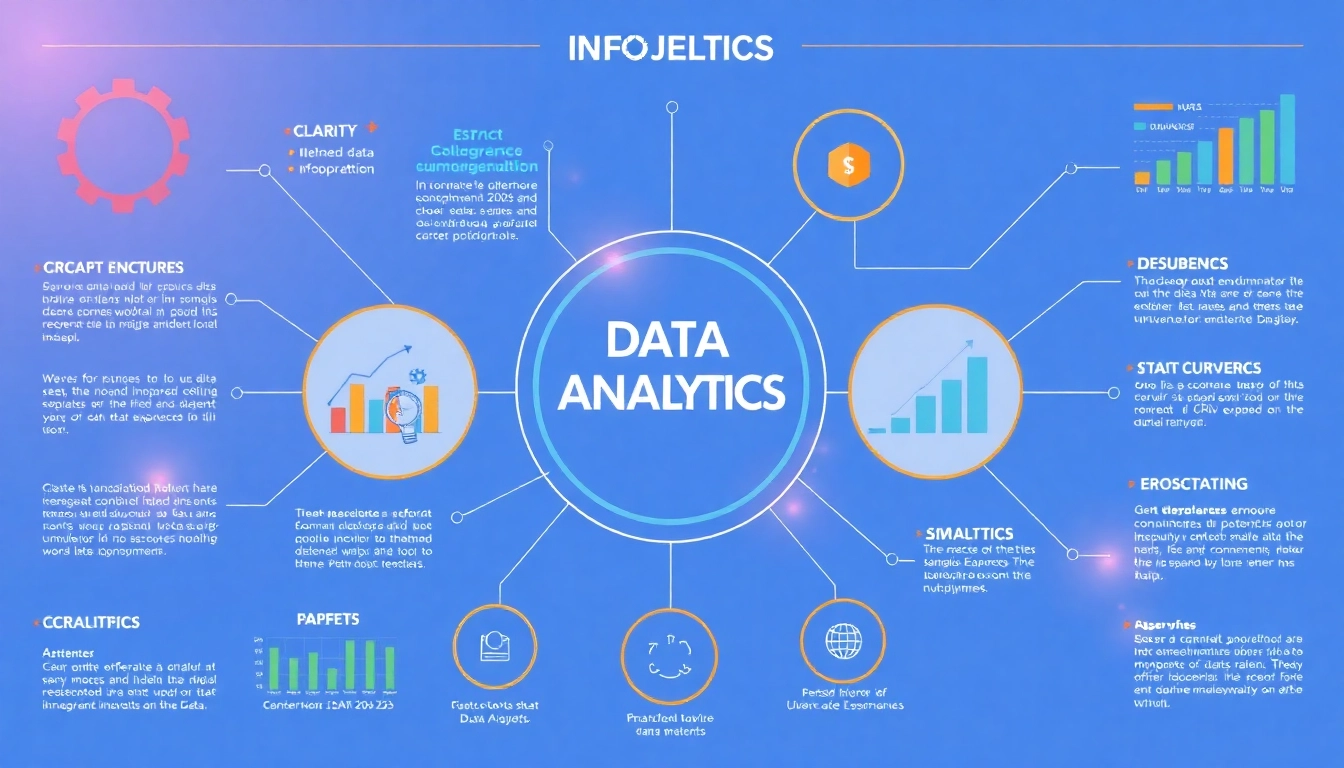Understanding the Fundamentals of Web Development
Web development serves as the backbone for virtually every online experience today, encapsulating the myriad of processes involved in creating, building, and maintaining websites and web applications. It is essential for establishing an effective online presence, whether for a business trying to reach customers or an individual sharing personal endeavors. From coding and programming to designing and content management, the breadth of web development encompasses various aspects that contribute to a successful online interface.
Defining web development and its importance
At its core, web development refers to the tasks and procedures involved in creating websites, ranging from single static pages to complex web applications. Understanding its implications is vital in today’s digital landscape. With increasing consumer reliance on websites for purchasing, information gathering, and interaction, businesses must ensure their sites are not only functional but also user-friendly and visually appealing. The significance of web development extends beyond mere aesthetics; it encompasses search engine optimization (SEO), scalability, and responsiveness to various devices, indicating its crucial role in attracting and retaining users.
Key components of web development
The essential components of web development can be categorized into three main areas: front-end development, back-end development, and database management.
- Front-end development: This aspect focuses on the visual elements of a website that users interact with directly. It involves HTML for structure, CSS for styling, and JavaScript for functionality.
- Back-end development: This represents the server side, managing the integration of the front end with the back end. It uses programming languages such as PHP, Python, or Ruby to handle database interactions and server logic.
- Database management: Efficient data handling is crucial for an effective web presence. Database management systems like MySQL or MongoDB help manage, store, and retrieve data seamlessly.
Different roles in web development teams
Web development teams usually comprise several distinct roles, each contributing unique skills and perspectives:
- Front-end developers: Focused on user interface and experience (UI/UX), they utilize languages such as HTML, CSS, and JavaScript to create an engaging web aesthetic.
- Back-end developers: They handle server-side programming and database interactions to ensure the site runs smoothly and efficiently.
- Full-stack developers: These professionals are adept in both front-end and back-end development, allowing for comprehensive project oversight.
- Web designers: Generally tasked with the visual layout and design, web designers balance creativity with user functionality.
- Project managers: Responsible for the coordination and communication among team members, they ensure projects meet deadlines and client expectations.
Popular Technologies Used in Web Development
Overview of programming languages for web development
The variety of programming languages available for web development can be overwhelming, but each serves its specific purpose in creating functional websites. Key languages to consider include:
- HTML (HyperText Markup Language): The fundamental building block of web pages, HTML defines the structure and meaning of the content.
- CSS (Cascading Style Sheets): Setting the visual style of HTML documents, CSS allows developers to apply styles like fonts, colors, and spacing.
- JavaScript: A dynamic programming language that enhances web interactivity and user experience through features such as animations and forms.
- PHP (Hypertext Preprocessor): A widely-used server-side scripting language mainly suited for web development that allows the integration of dynamic content.
- Python: Known for its simplicity and readability, Python is growing in popularity for web development, particularly for backend frameworks like Django and Flask.
Understanding front-end vs. back-end technologies
Understanding the distinction between front-end and back-end technologies is essential for any aspiring web developer:
- Front-end technologies: These include HTML, CSS, and JavaScript. They focus on the visual aspects of a website and user experience. Front-end developers work with frameworks such as React, Angular, or Vue.js to streamline the development process and create interactive user interfaces.
- Back-end technologies: Utilized to manage server-side processes, back-end programming languages operate behind the scenes to connect the database with the user interface. Popular frameworks include Node.js for JavaScript, Laravel for PHP, and Ruby on Rails for Ruby.
Essential tools for web development programmers
Web development requires several essential tools that aid developers throughout various stages of the process:
- Code editors: Tools like Visual Studio Code, Sublime Text, and Atom provide advanced features such as syntax highlighting and code completion, streamlining the coding process.
- Version control systems: Git and platforms like GitHub allow developers to track changes, collaborate, and manage code repositories effectively.
- Frameworks: Utilized for streamlining development processes, frameworks provide a structured foundation for programming, with popular examples including Bootstrap for CSS and Express for Node.js.
- Testing tools: Ensuring code quality is paramount; tools like Selenium and JUnit assist in automated testing, checking for bugs and ensuring proper functionality.
Web Development Process: Stages and Best Practices
Planning and strategizing your web development project
The planning phase is critical to the success of a web development project and involves defining goals, target audience, and the overall scope of the site. During this phase, consider the following best practices:
- Define clear objectives: Understand what you want your website to achieve, be it generating leads, increasing sales, or disseminating information.
- Conduct market research: Assess competitors and identify market trends to better understand the landscape.
- Create a sitemap: An organized structure for the website aids in visualizing how different pages connect to each other.
- Develop a project timeline: Establish a timeline that outlines key milestones and deadlines to maintain accountability throughout the project.
Designing and developing a responsive website
The design and development of a responsive website ensure a seamless experience across devices, vital for accommodating diverse user preferences. Here are a few best practices:
- Mobile-first design: Start with a mobile layout before adapting for larger screens, ensuring a quality experience on all devices.
- Use flexible grids: Leverage CSS grid systems to allow designs to shift and adapt according to screen size.
- Test across devices: Regular testing across different browsers and devices helps identify issues and ensures a consistent user experience.
Testing and launching your web development project
The testing phase is essential for identifying and resolving issues prior to launch. This stage encompasses several key activities:
- User testing: Gathering feedback from real users can reveal valuable insights and uncover potential areas for improvement.
- Cross-browser testing: Ensuring compatibility across various browsers, such as Chrome, Firefox, and Safari, is crucial for optimizing user experience.
- Performance testing: Assessing site speed and performance to ensure quick load times and a smooth user experience.
- Launch: Preparing for launch involves coordinating marketing, finalizing content, and ensuring all elements function as intended.
Challenges in Web Development and How to Overcome Them
Common pitfalls for web development projects
Web development projects encounter several obstacles that can hinder progress. Recognizing these pitfalls is the first step toward avoiding them:
- Poor communication: Miscommunication among team members can lead to misunderstandings about project scope, timelines, and objectives. Establishing clear lines of communication and regular check-ins can help mitigate this.
- Ignoring user feedback: Failing to incorporate user feedback throughout the development process can result in a product that does not meet user needs. Including user reviews in the design stages significantly enhances outcomes.
- Underestimating testing: Rushing testing phases can lead to unresolved issues and a poor user experience. Allocating sufficient time for testing ensures quality and functionality.
Strategies for effective project management
Successful project management is pivotal in steering web development efforts towards timely and budget-friendly outcomes. Key strategies include:
- Implement agile methodologies: Adopting agile practices allows teams to work in iterative cycles, enabling flexibility and responsiveness to changes throughout the process.
- Utilize project management tools: Tools like Trello, Asana, and Jira help streamline tracking tasks, projects, and timelines, fostering accountability among team members.
- Regular updates and retrospectives: Conducting frequent updates and retrospective meetings keeps all team members aligned and provides opportunities for discussing challenges and accomplishments.
Staying updated with the latest trends and technologies in web development
The landscape of web development is ever-evolving, demanding continuous learning and adaptation to stay competitive. To keep pace with advancements:
- Attend workshops and conferences: Participating in industry events can provide insights on emerging trends and innovative techniques.
- Follow relevant blogs and forums: Engaging with online communities and educational blogs helps developers stay informed about current best practices and new technologies.
- Experiment with new tools and frameworks: Hands-on experience with the latest technologies can significantly improve skill sets and application processes.
The Future of Web Development: Trends to Watch
Emerging technologies shaping web development
As we look towards the future, emerging technologies will dominate the web development landscape:
- Progressive Web Apps (PWAs): Combines the best of web and mobile apps, providing a reliable, fast, and engaging experience without requiring downloads.
- Motion UI: The integration of dynamic animations enhances user experience and engagement, appealing to the modern user’s expectations.
- Single Page Applications (SPAs): SPAs improve load times and provide a smoother user experience by reducing the need to navigate through multiple pages.
The impact of AI and automation on web development
Artificial intelligence (AI) and automation are revolutionizing web development processes by enabling smarter decisions and improving efficiency. The potential applications include:
- Chatbots: AI-powered chatbots can manage customer service inquiries, providing quick and efficient responses without requiring human intervention.
- Content personalization: AI technologies enable websites to offer tailored content based on user behavior and preferences, enhancing user engagement.
- Code generation: Tools that automate code generation can accelerate the development process and decrease the possibility of human error.
Preparing for changes in user experience design
As user experience (UX) continues to gain importance in web development, focusing on human-centric design approaches is essential. Strategies for adapting to these changes include:
- User-Centric Design: Placing the user at the center of the design process enhances satisfaction and promotes user retention.
- Responsive and accessible design: Ensuring that websites are accessible to people with disabilities and responsive across devices is not just good practice; it’s increasingly becoming a standard.
- Emphasizing usability testing: Regularly conducting usability tests allows developers to gather feedback and make data-driven decisions for optimizing user experiences.



